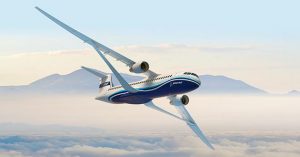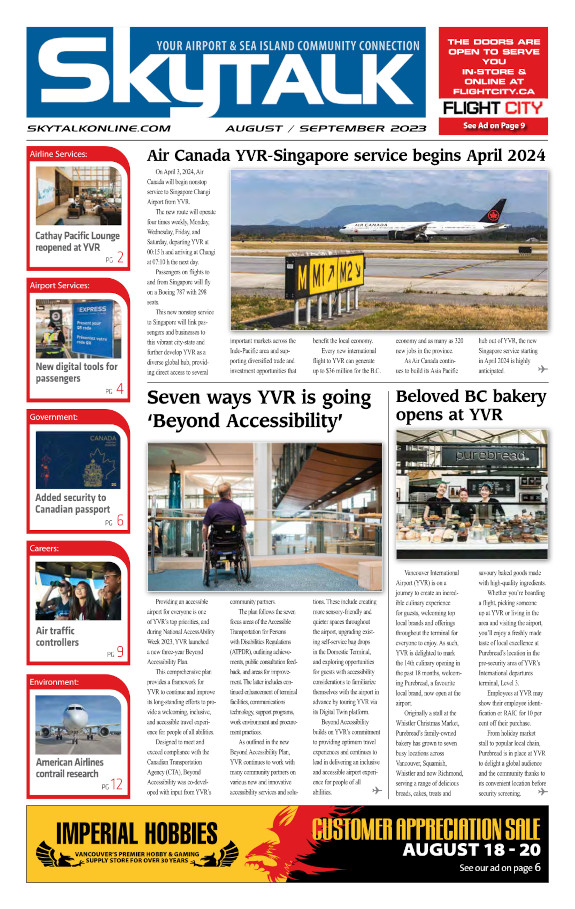
Designed to be more aerodynamic and fuel efficient, Boeing is studying the Transonic Truss-Braced Wing concept through a collaboration with NASA as part of the Subsonic Ultra Green Aircraft Research program. (Boeing Creative Services illustration)
Boeing has revealed its newest Transonic Truss-Braced Wing (TTBW), which researchers say will offer unprecedented aerodynamic efficiency while flying at Mach 0.80—faster than previous TTBW concepts.
The high wingspan is made possible by the presence of a truss, which supports the extended length of an ultra-thin wing. From end-to-end, the folding wings measure almost 52 metres.
Originally, the TTBW was designed to fly at speeds of Mach 0.70 – 0.75. To increase the aircraft’s cruise speed, the new concept has an optimized truss and a modified wing sweep. By adjusting the wing sweep angle, the truss can carry lift more efficiently. The result is a more integrated design that significantly improved vehicle performance.
The new changes follow extensive wind tunnel testing at NASA Ames Research Center. For nearly a decade, Boeing and NASA have been studying the concept as part of the Subsonic Ultra Green Aircraft Research (SUGAR) program. The research focuses on innovative concepts that reduce noise and emissions while enhancing performance.








